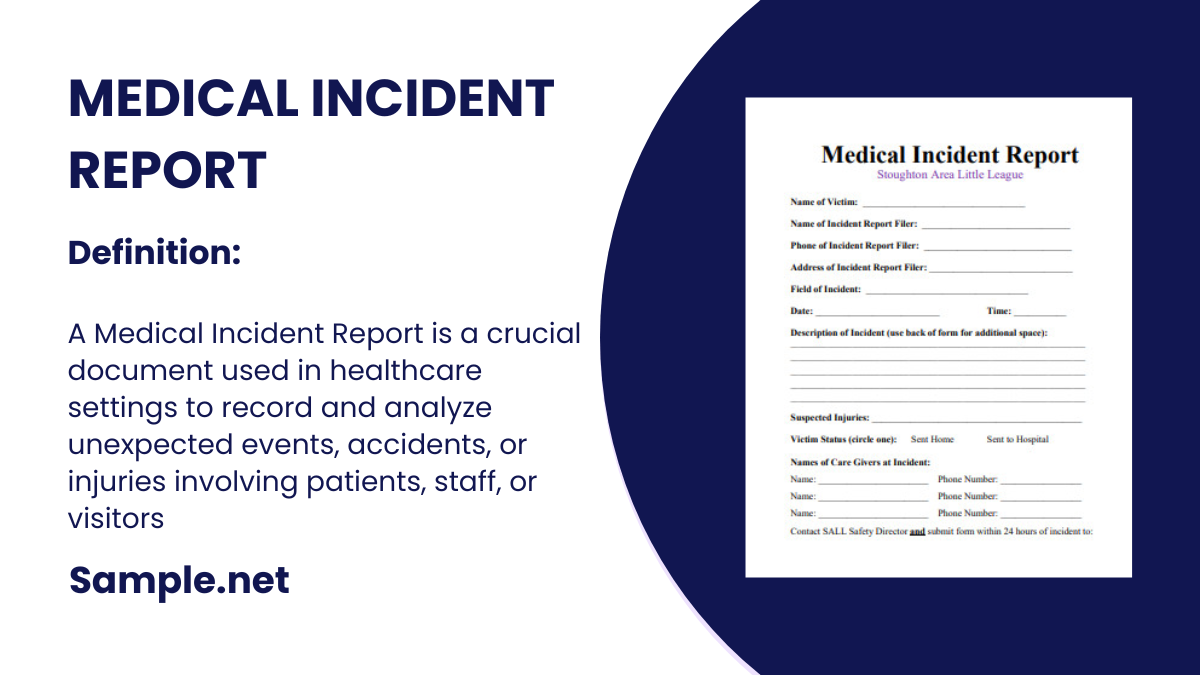A progress report is a key document that provides a detailed account of ongoing tasks, goals, and milestones achieved over a specific period. It helps stakeholders track project development,…
continue reading
8+ Sample Product Incident Report
-
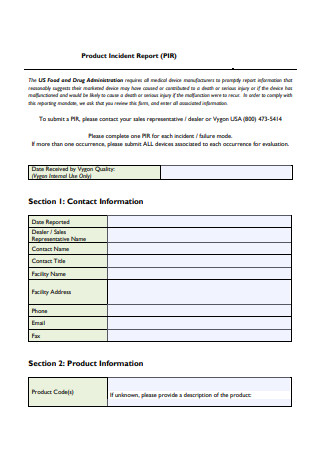
Product Incident Report Template
download now -

Product Incident Field Report
download now -

Basic Product Incident Report
download now -
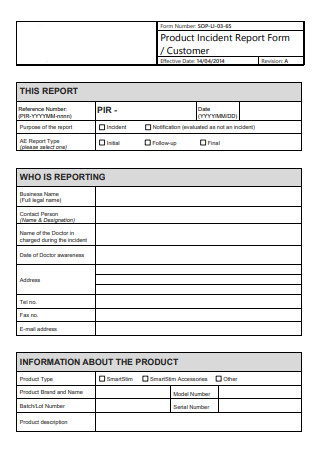
Product Incident Report Form
download now -
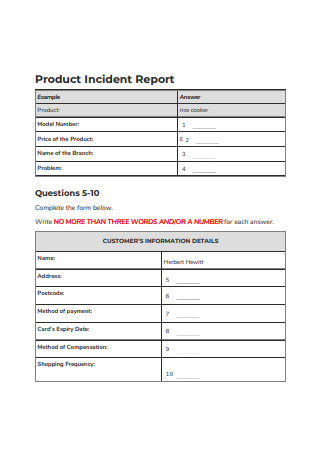
Product Incident Report Example
download now -
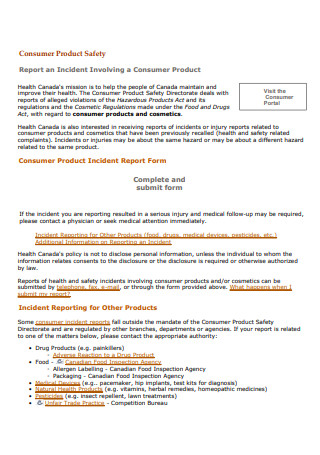
Consumer Product Safety Incident Report
download now -
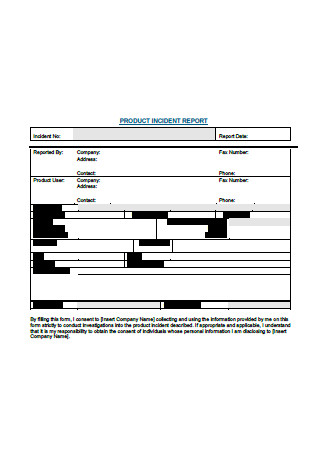
Sample Product Incident Report
download now -
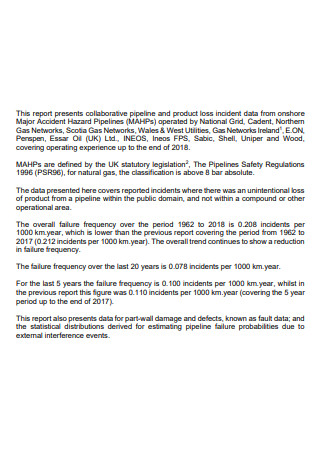
Product Loss Incident Report
download now -
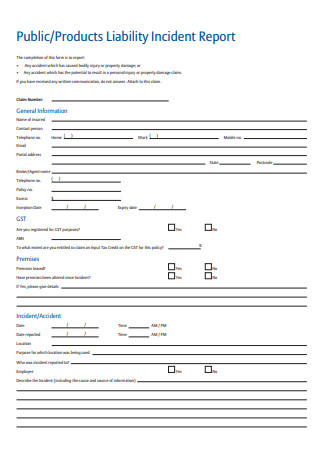
Product Liability Incident Report
download now
What is a Product Incident Report?
An Incident Report functions as a warning to management or the manufacturer, assisting in the identification of possible issues that need to be addressed during an event that transpired, prompt reporting provides management with an accurate record of the facts. Facts get obscured with time, and recalling of specifics may fade. The important facts regarding the issue or critical incident must be included in a product incident report. The process of compiling a report begins with fact-gathering and concludes with suggestions for avoiding future incidents.
Three Types of Product Defects
Before we proceed into the process of writing a product incident report, you should be aware of the different types that a product can be considered defective. Why you may ask? It is because knowledge is important before jumping into filing it under a certain category which it may not even be considered as it is. And knowing which type is which, helps you to proceed with caution before the incident report turns into a much larger issue that could involve corporations or even a lawsuit. According to HG Legal Resources, there are three types of product defects that can result in product liability cases.
How to Write a Product Incident Report
Now that we have gone through the basics of the different types of defective products, it is a given that you already know which type your product incident report is closest to. Proceeding on towards the step-by-step guide in writing your product incident report. Not to fret, there are available templates that you may use in filing for the said document. Not only will it help you to know which format goes for which information but it also lessens your time in making one from scratch. Without further ado, read on to know the steps in writing your product incident report.
Step 1: Complainant’s Information
How would the company, manufacturer, and even the authorities know of the person behind the product incident report if you would not include your personal information? Don’t forget to include your name, address, contact number, and other important details regarding your identity tied to the incident you have encountered. Only add in information that is relevant to the report and don’t add details that serve no purpose or correlation to that of the incident.
Step 2: Product Details
In the next step, you would need to describe the product you have purchased in specifics. If there is a model number like for phones or devices, then you should include it in the report. As well as a vivid description of the exterior of the product before and after it has caused you an incident. Such as when certain devices malfunction or blow up, then the changes in their appearance need to be described as to showcase the difference upon your purchase of it and after the defect. Or if they were sold in a pack, then you should identify how many of the items were faulty.
Step 3: Event Description
You should be able to figure out the order of events based on the facts. Describe the sequence in full in your report, including the events leading up to the incident, the events that occurred during the incident, and the aftermath, or the events that occurred shortly after the incident. The incident should be elaborated in sufficient detail in the report so that the company or authorities may visualize what happened. You might want to add a Diagram in your incident report to demonstrate the sequence of events connected to the occurrence in a clear and visually effective manner. You could also want to include photographs of the accident scene to assist authorities or the company in understanding what happened.
Step 4: Receipts and other Documentation
Providing evidence will aid your product incident report to be taken seriously and not disregarded as a mere ordinary complaint. The presence of a Store Receipt for example will help companies or authorities to trace your claim to the store chain the product was purchased or availed from. Rather than not having it, then they will have a harder time linking your complaint to the place where the product came from. Other kinds of evidence that can provide support are photos of the product before and after it became defective to provide a comparison.
Step 5: Witnesses and Testimonials
Your report may be a first-hand account of the incident but adding in witnesses and other testimonials can provide you additional support in your claims. But do be mindful that these witnesses should be present during the incident and should not be spreading gossip or any kind of untrustworthy information that can lessen the credibility of your product incident report. It is much better if they were present during the incident or were affected by the defective product themselves. If there were no affected individuals other than yourself, then you may skip this step or leave it blank. Don’t add it in for the sake.
Step 6: Provide Feedback or Recommendation
As for the last step in writing a product incident report, you are able to provide a suggestion to the company you are writing to. It doesn’t mean you are being pretentious enough to know how they can solve the issue but it is merely providing Feedback so that they have an idea on how to address the incident. Since the report does come from you then they are well aware of the effects and harms it can do to their consumers. And no company wants a repeat of such faults and defects otherwise they will lose their target market to their competitors.
What Should a Good Incident Report Contain?
An incident report allows your company to keep track of and investigate occurrences in a methodical manner. Your report must enable you to simply capture all necessary features while also ensuring that you do not overlook any important facts. An efficient consumer product incident report should include all facts and required details to guarantee that all facts and details are complete. This document can coincide with an Analysis Report in keeping track of the information that your company has received.
FAQs
What is considered a defective product?
Any Product that is unreasonably hazardous when utilized for its intended purpose without any changes or tampering is considered faulty. A faulty product, to be more exact, is one that causes damage to a person as a result of a design defect, a manufacturing defect, or a marketing defect. Food, medical gadgets, and children’s toys are some of the most prevalent instances of faulty products.
What is product liability?
Product liability refers to the legal responsibility of a producer, retailer, or seller of a product for enabling a defective product to reach a customer, independent of the consumer’s own wrongdoing. Product liability laws establish who is accountable for faulty or harmful goods.
What is needed before filing a product complaint?
The product was faulty when it was created, the complainant and their property were damaged in some manner by the defective product, and the product’s manufacturer, seller, or distributor intended for the product to reach the consumer without any modifications being made throughout the process.
When is it appropriate to file a product incident report?
Within 48 hours, any claimed product flaws should be documented with sufficient details and sent as a notice to the company or manufacturer owning said product. If the product incident report exceeds the number of hours, then an additional reason must be added as to the cause of the delay of the report. If medical attention was given to an injury caused by the product and the main cause of the delay, you may attach a Medical Receipt to provide supporting evidence.
Unintended defective products are unavoidable but not a deliberate case caused by a company, on the one hand, shortcomings are forgivable but not tolerable. If you stay compliant with the faulty performance of the product, not only will companies remain ignorant to the incident but may not know how they could improve on their product to avoid stress to their consumers. In sending a product incident report, not only are you notifying the company but you are also leading them to awareness to improve the quality of their product. Everyone deserves to enjoy the product that they have purchased with their hard-earned money.

